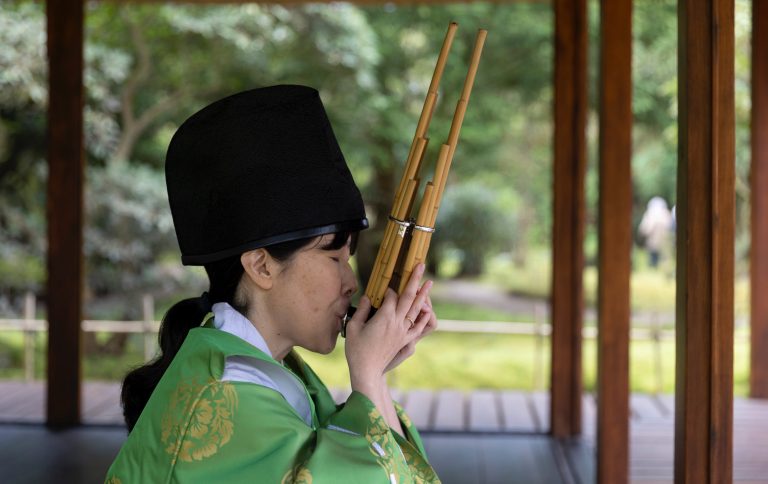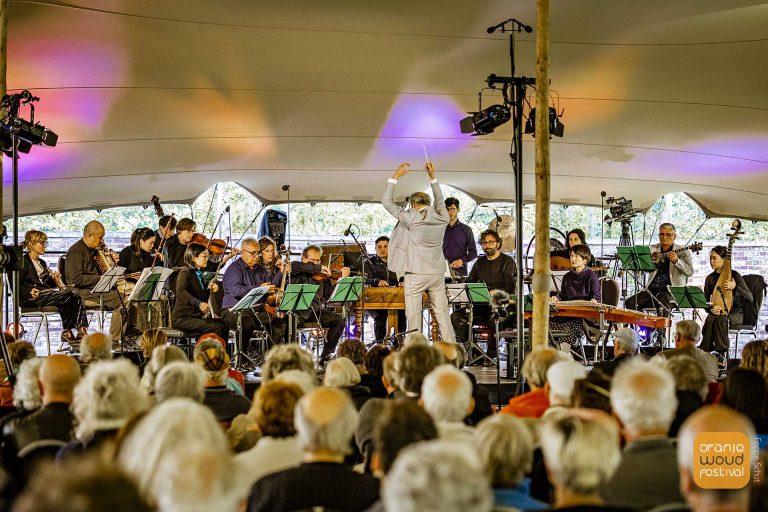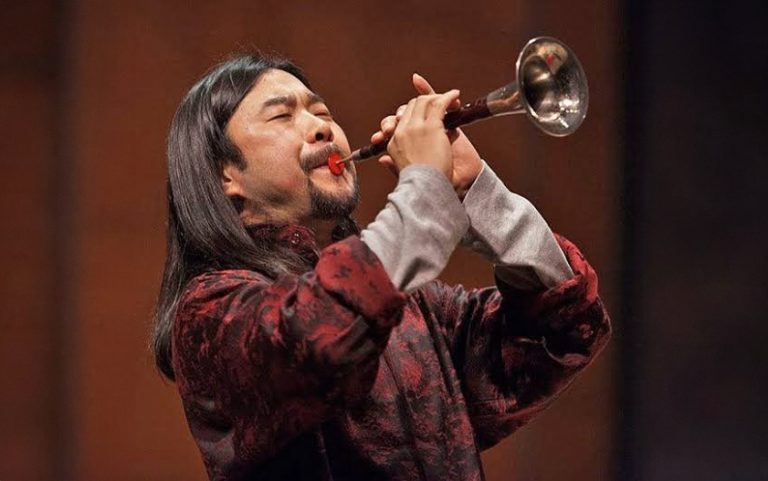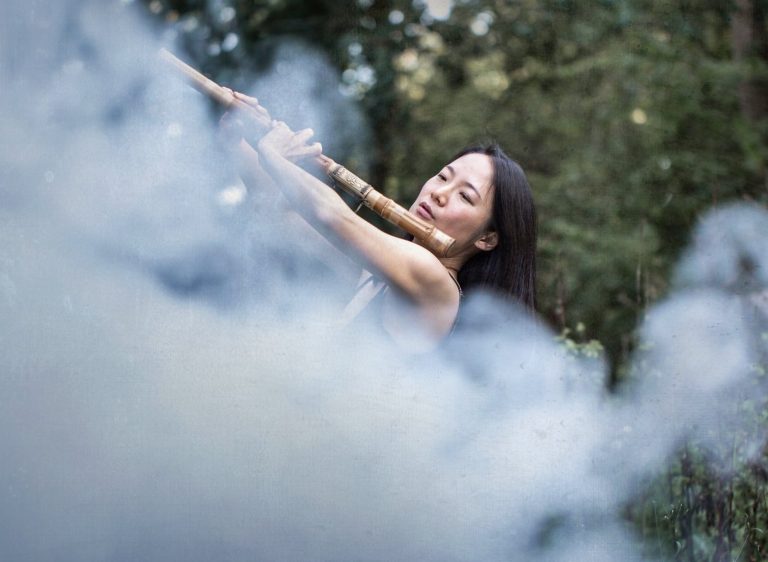Play times
14:00-14:15 and 14:20-14:35
15:00-15:15 and 15:20-15:35
The Atlas Ensemble's second residency at Oranjewoud Festival will take place from May 24 to June 2, 2024. This culminates in the premiere of the second of a series of new compositions Joël Bons is writing for Oranjewoud Festival. Leading up to this special performance on June 2, you can get acquainted with a number of instruments from Asia and the Middle East that make up the Atlas Ensemble. During this concert the related mouth organs sheng and sho will sound.
The players are star players from China and Japan:
Performers
- Zifan Dai, sheng
- Weng Ziyi, sheng
- Naomi Sato, sho More about www.sato-naomi.com
Sheng
The sheng is a Chinese mouth organ. The body is a bowl made of metal, wood or a gourd. The instrument has a blowpipe and 17 to 36 bamboo or metal pipes protruding from the top of the bowl. The elegant symmetrical arrangement of the pipes refers to the two folded wings of the mythical bird Phoenix. Each pipe has a hole in the bowl on the side topped with a metal tongue that interrupts the flow of air. The sheng produces a remarkably clear, metallic sound. Western harmonicas, tongue organs and concertinas use the same basic acoustic principles as the sheng. Mouth organs similar to the sheng first appear in Chinese texts from the 14th to 12th centuries BC. Today, the sheng is mainly used to play Chinese classical music in small and large ensembles with other instruments such as the pipa (vertical plucked instrument) and erhu (Chinese violin). The sheng has a relative in Japan: the sho.
Sho
The sho is a Japanese musical instrument with a free reed introduced from China during the Nara period (from 710 to 794). It is modeled after the Chinese sheng, but is usually smaller in size. It consists of 17 slender bamboo pipes, each with a metal free reed at the base. Two of the pipes make no sound, although research shows that they were used in certain music during the Heian period (794 to 1185). The sound of the instrument is said to imitate the call of a phoenix, and it is for this reason that the sho's two mute pipes have been retained as an aesthetic element, creating two symmetrical "wings. Like the Chinese sheng, the pipes are carefully tuned with a drop of wax. Because moisture that accumulates in the sho's pipes blocks the sound, musicians often warm the instrument over a small charcoal stove when they are not playing. The instrument produces sound when the player's breath is breathed in or out, allowing long periods of uninterrupted playing. The sho is one of the three main woodwind instruments used in gagaku, the music of the Japanese imperial court. The traditional playing technique in gagaku involves the use of tone clusters called aitake, which gradually move from one to the other and accompany the melody.



